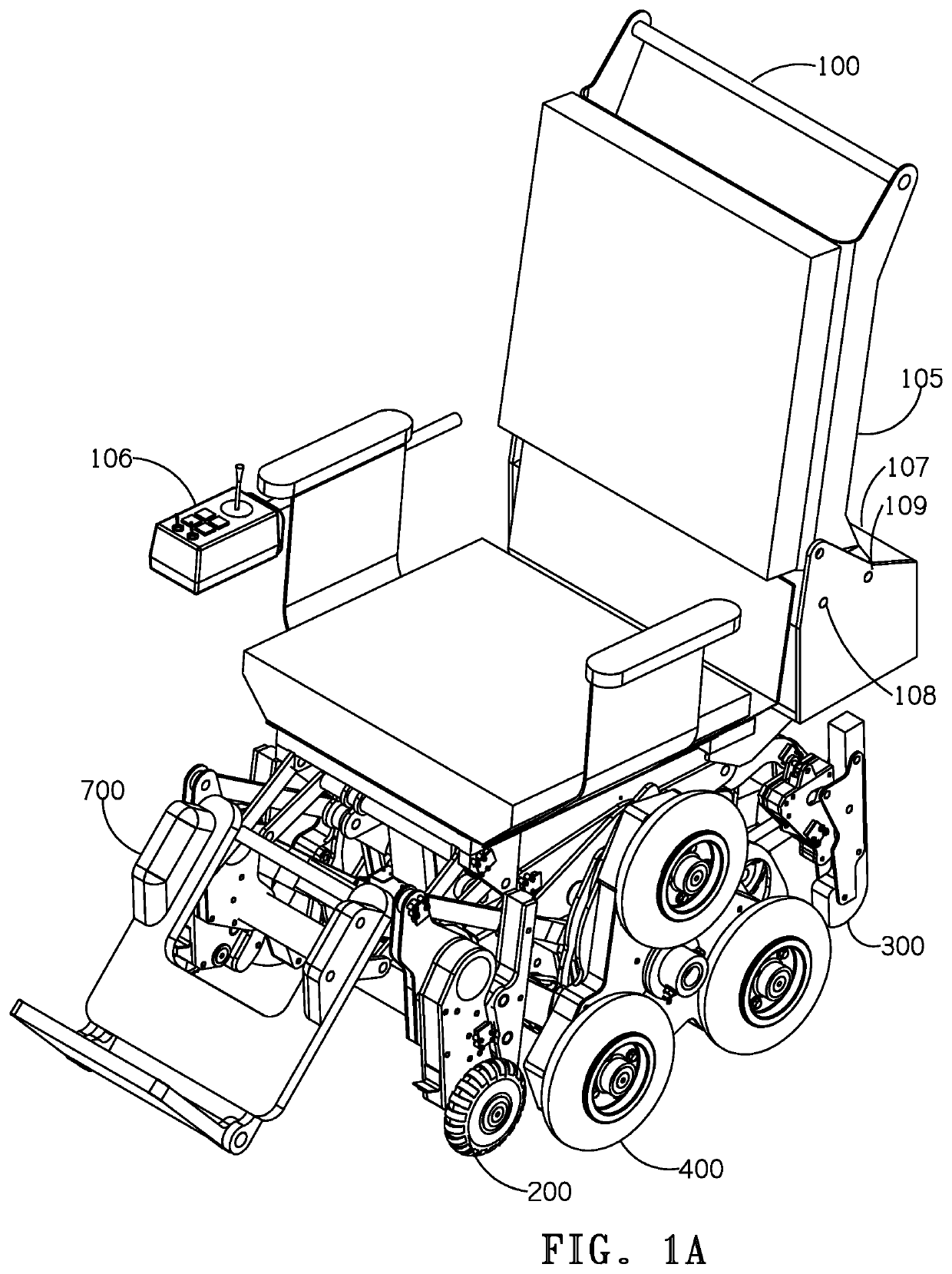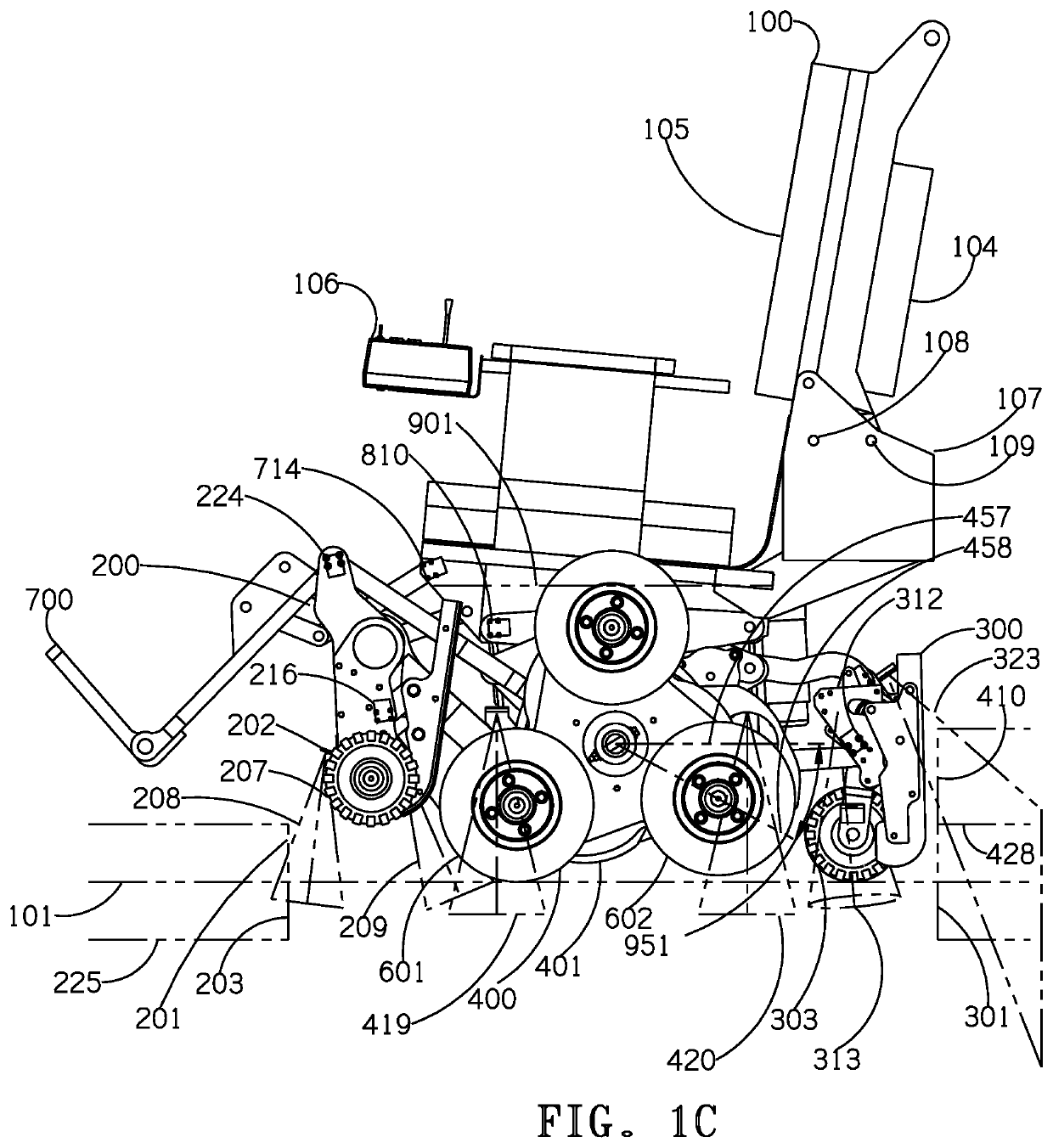Enhanced mobility wheelchair
a mobility wheelchair and wheelchair technology, applied in the field of enhanced mobility wheelchairs, can solve the problems of inconvenient forward ascending and aft descending of even small steps, inconvenient use of wheelchair users, and inability to properly load stairs by resting on stair treads of larger diameter wheels and tracks
- Summary
- Abstract
- Description
- Claims
- Application Information
AI Technical Summary
Benefits of technology
Problems solved by technology
Method used
Image
Examples
Embodiment Construction
[0006]For this invention, down steps in the direction that the wheelchair faces, such as for aft ascending and forward descending are defined as forward down steps, FDS. Up steps in the direction the wheelchair faces, such as for forward ascending and aft descending steps are defined as forward up steps, FUS. Climbing refers to either ascending or descending. The front balancing means or skid system 200 includes articulated skid runners 204 and balancing wheels, or skid wheels 207 and is named the skid system 200 and is shown in FIG. 3A. Multi-directional skid wheels are preferred for their reduce lateral operating width although they could be castering type wheels. The rear balancing means or caster system 300 includes the function of a castering wheel but also includes caster runners 319 and is named the caster system 300 and is shown in FIG. 5A. Multi-directional wheels are well known wheels such as those manufactured by Rotacaster of Australia. They provide the function of caste...
PUM
 Login to View More
Login to View More Abstract
Description
Claims
Application Information
 Login to View More
Login to View More - R&D
- Intellectual Property
- Life Sciences
- Materials
- Tech Scout
- Unparalleled Data Quality
- Higher Quality Content
- 60% Fewer Hallucinations
Browse by: Latest US Patents, China's latest patents, Technical Efficacy Thesaurus, Application Domain, Technology Topic, Popular Technical Reports.
© 2025 PatSnap. All rights reserved.Legal|Privacy policy|Modern Slavery Act Transparency Statement|Sitemap|About US| Contact US: help@patsnap.com



